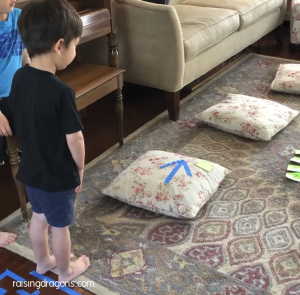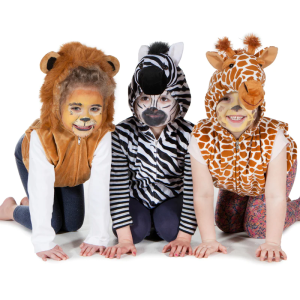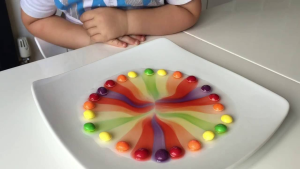Engaging in fun kindergarten activities at home is a fantastic way to nurture your child’s development and creativity while spending quality time together.
Whether you’re a parent looking for entertaining and educational activities or a caregiver seeking to make learning enjoyable, there are countless options to choose from that will captivate young minds.
These activities provide a unique opportunity to foster essential skills like fine motor coordination, cognitive reasoning, and social interaction, all within the comfort and safety of your home.
So, let’s dive into a world of imaginative play, exploration, and learning that will make your child’s early years both enriching and enjoyable.
Sensory Bin Adventures:

Create a sensory bin using a large container and fill it with materials like rice, beans, sand, or even water beads. Add small toys, scoops, and cups. This tactile experience helps kindergarteners develop fine motor skills and explore different textures. You can turn it into a themed adventure, like a dinosaur dig or a treasure hunt, to spark their imagination and curiosity.
Storytime and Craft Hour:

Choose a favorite children’s book and read it together. Afterward, encourage your child to create a craft related to the story. For example, if you read “The Very Hungry Caterpillar,” you can make a caterpillar out of egg cartons. This activity combines literacy with hands-on creativity, fostering a love for reading and artistic expression.
Indoor Obstacle Course:

Transform your living room into an exciting obstacle course using pillows, cushions, chairs, and whatever else you have on hand. Set up challenges like crawling under tables, leaping over cushions, and balancing on lines of tape on the floor. This active play not only keeps your child physically engaged but also helps them develop coordination and problem-solving skills.
Related: 20 Kindness Activities for Kindergarten & Elementary Students
Nature Scavenger Hunt:

Take your kindergarten explorer on a nature scavenger hunt in your backyard or local park. Create a list of items for them to find, such as a leaf, a rock, a feather, or a pinecone. This activity encourages outdoor exploration, observation, and an appreciation for the natural world. You can also discuss the different shapes, colors, and textures of the items found.
Cooking and Baking Together:

Involve your child in the kitchen by letting them assist with simple cooking or baking projects. Measure ingredients together, mix, and decorate cookies or make homemade pizza. Cooking activities teach math skills, teamwork, and patience, while also allowing for a delicious reward at the end. Plus, it’s a great opportunity to bond and share quality time.
Puzzle Palooza:

Set up a variety of age-appropriate puzzles on a table or the floor. Jigsaw puzzles, shape-sorters, and wooden block puzzles are excellent options. Puzzles help develop problem-solving skills, spatial awareness, and patience. Encourage your child to complete the puzzles independently or work on them together for added bonding time.
Dress-Up and Role Play:

Gather a collection of costumes, hats, and props for a dress-up and role-play session. Let your child’s imagination run wild as they become pirates, astronauts, doctors, or characters from their favorite stories. Role-playing fosters creativity, language development, and social skills as they interact with imaginary friends or family members.
Mini Science Experiments:

Conduct simple science experiments at home with readily available items. For instance, create a volcano eruption using baking soda and vinegar, make a rainbow in a jar with colored liquids, or explore buoyancy with a sink-or-float experiment in the bathtub. These hands-on activities introduce basic scientific concepts and encourage curiosity.
Related: 20 Dynamic Blending Activities for Kindergarten
Letter and Number Hunt:

Write letters of the alphabet or numbers on pieces of paper and hide them around the house. Give your child a list of items to find that correspond to each letter or number. This activity not only reinforces letter and number recognition but also provides a fun and active way to practice reading and counting.
Musical Parade:

Put on a music parade in your living room by playing different songs and encouraging your child to march, dance, or move to the beat. Provide musical instruments like shakers, tambourines, or homemade drums (using pots and pans) to enhance the experience. Musical activities promote coordination, rhythm, and self-expression.
Art Gallery Day:

Host an art gallery day at home by providing your child with various art supplies like crayons, markers, colored pencils, and paints. Let them create their own masterpieces on paper or canvas. Afterward, hang their artwork around the house to showcase their creativity. This activity encourages artistic expression and boosts self-esteem.
Gardening Adventures:

If you have outdoor space, involve your child in gardening activities. Plant flowers, herbs, or vegetables together. Teach them about plant growth, caring for plants, and the importance of nature. Gardening fosters a sense of responsibility and a deeper connection with the environment.
DIY Science Show:

Help your kindergartener put on a DIY science show for the family. Choose a few simple science experiments or demonstrations, such as creating a tornado in a bottle or making a homemade lava lamp. Have your child explain the science behind each experiment, promoting communication and scientific curiosity.
Family Storytelling Circle:

Gather as a family for a storytelling circle. Each person, including your child, takes turns sharing a story they create or recall. Encourage imagination by using prompts like “Once upon a time…” or “Imagine if…” This activity enhances language skills, creativity, and family bonding.
Building Challenges with Blocks or LEGO:

Engage in building challenges using building blocks, LEGO sets, or any construction toys you have. Give your child specific tasks, like building the tallest tower, creating a bridge, or constructing a vehicle. This activity develops fine motor skills, spatial reasoning, and problem-solving abilities.
Nature Journaling:

Encourage your child to keep a nature journal. Provide them with a notebook and colored pencils, and take walks together to observe and sketch plants, insects, birds, or other natural elements in your surroundings. This activity promotes an appreciation for the outdoors, develops observation skills, and enhances their artistic abilities.
Homemade Board Games:

Create your own board games with your child. Together, design a game board, come up with rules, and make game pieces. This activity encourages creativity and critical thinking as you work collaboratively to develop a unique game. Plus, playing the game afterward provides hours of entertainment.
Baking and Decorating Cookies:

Spend a day baking and decorating cookies together. Let your child help with measuring, mixing, and cutting out fun shapes. Once the cookies are baked, set up a decorating station with various toppings like icing, sprinkles, and chocolate chips. This culinary adventure teaches math skills and enhances their creativity in the kitchen.
Science in the Kitchen:

Turn your kitchen into a science lab with simple kitchen experiments. For example, make a volcano using baking soda and vinegar or grow crystal formations using sugar and water. These hands-on experiments offer a fun way to learn about chemical reactions and the scientific method.
Animal Safari:

Transform your living room or backyard into an animal safari adventure. Use stuffed animals or toy figurines to represent different animals, and set up “habitats” or “dioramas” for them. Your child can play the role of a wildlife explorer and learn about various animals, their habitats, and their behaviors through imaginative play.
Shadow Play:

Create a shadow puppet theater using a bedsheet or a cardboard box with a light source behind it. Encourage your child to make their own shadow puppets by cutting out shapes from cardboard or paper. Then, put on a show with their creations. This activity enhances storytelling skills and sparks creativity.
Colorful Science Experiments:

Conduct colorful science experiments with household items. For example, you can make rainbow-colored skittles or M&M’s dissolve in water, create a density rainbow with liquids of different densities, or explore color mixing with food coloring and milk. These experiments make learning about color and chemical reactions exciting.
Alphabet Scavenger Hunt:

Turn learning the alphabet into a scavenger hunt. Create a list of items, each starting with a different letter of the alphabet, and challenge your child to find objects around the house that match each letter. This activity reinforces letter recognition and vocabulary while keeping them active and engaged.
Family Yoga Session:

Practice family yoga together. Find kid-friendly yoga videos or books that guide you through yoga poses designed for children. Yoga helps improve flexibility, balance, and concentration while also promoting relaxation and mindfulness. It’s a wonderful way to bond and stay active at home.
Music and Movement Parade:

Host a music and movement parade in your living room. Create a playlist of songs with different tempos and styles, and encourage your child to dance, march, or move around the room according to the music’s rhythm. This activity not only promotes physical activity but also boosts creativity and coordination.
Story Cubes Adventures:

Create your own story cubes or use purchased ones with images on each side. Roll the cubes and let your child come up with a story based on the pictures that land face up. This activity fosters creativity, storytelling skills, and imaginative thinking.
Balloon Volleyball:

Set up a “volleyball” game using a balloon as the ball. Clear a space in your living room and use a string or a piece of tape to mark a “net” across the room. Play together or involve the whole family in this fun and active game, which promotes coordination and teamwork.
Related: 100 Funny Questions To Ask Kindergarten Kids

